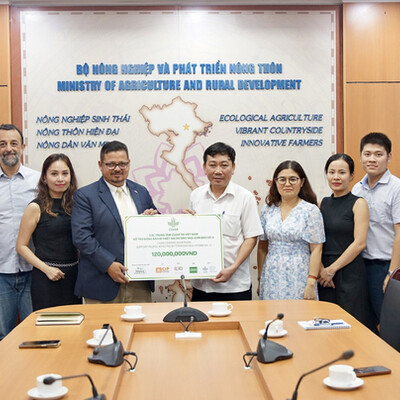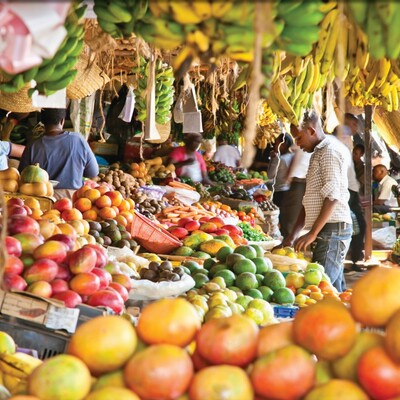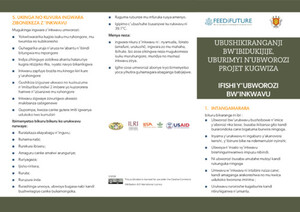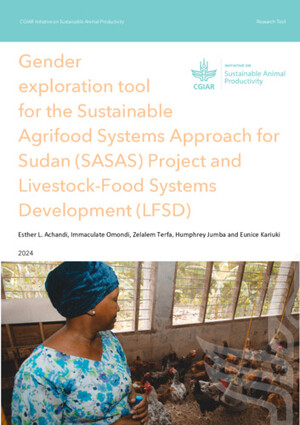
Social learning – is there any other kind?
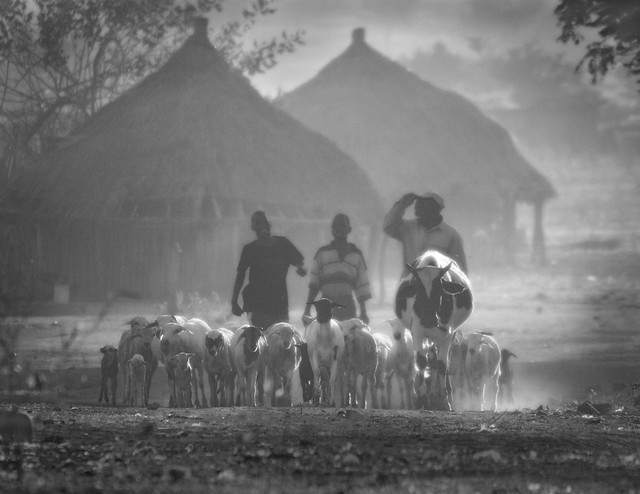
Herding village livestock to pasture at dawn, Muchamba Village, Tete Province, Mozambique (photo credit: ILRI/Mann).
Meeting and talking where livestock trails intersect has energised learning and the development of a shared culture since people began herding animals thousands of years ago, which is pretty much as early as it gets.
Nobody at the International Livestock Research Institute (ILRI) needs to be reminded that social learning is at the heart of human development. So why are we still researching and talking about how to ensure social learning is at the centre of our work in Development? It’s partly to do with language: it’s rare to find two people who’d agree immediately on a definition of social learning. And it’s a domain that’s become further complicated by the use of the term social media to describe the explosion of new digital networks and platforms that people use to communicate and connect. It’s also about power. Identifying how social learning can be energised and built upon to achieve change is difficult, given that social processes play out within formal or informal power structures. While social learning can contribute to the coming together and collaboration of people to increase their influence it’s often hard to link transient and usually un-recorded social processes with the actual change processes. And creating programmes that maximise the opportunities for that kind of social dynamic is even harder in the complex environments in which projects happen.
We’ve been exploring social learning in climate change for three years in the Climate Change and Social Learning (CCSL) project. That specific ILRI-funded activity has stopped, although the activity and research continues within the CGIAR Research Program on Climate Change Agriculture and Food Security (CCAFS) and other related programs. The issue highlighted above, in particular, social learning and power, is an area CCAFS continues exploring. As CCSL had a strong communication component we thought it useful to review how social and other digital media intersects with what we call social learning, touch on what is being said about Return on Investment (RoI) and the impact from Social Learning, and consider what that might mean for future efforts to integrate social dynamics into development programs.
Social media and social learning
“We are, above all, social animals. Throughout the history of digital communication ordinary people have used or subverted digital technology to communicate and make connections, and will only adopt them when they meet such primary needs”. We wrote that in a review of social media for HIV/Aids communicators[1] in 2008, which also happened to be a great year for Internet start-ups, including Github, AirBnb, Yammer, Groupon and Pinterest! Even then it was clear that the rise of social media was both going to change the way that people connected and was itself a constantly evolving set of products and tools shaped by people’s hunger to deepen bonds and make new connections.
Jane Hart, a speaker and writer on modern approaches to workplace learning, brings the perspective of a learning professional seeking to integrate social media into learning. As she says in this summary presentation, while ‘social learning can make learning a more powerful experience’, ‘social learning doesn’t require the use of social media’ and ‘use of social media tools doesn’t mean social learning takes place’.
Hart’s view pretty much represents mainstream thinking in 2016 among communication, knowledge and learning professionals. Organisations like ILRI are extending the impact of social media across the enterprise. Julian Stodd has also done a lot of work from the learning perspective, developing a practical framework for integrating social learning into more conventional learning, exemplified in his work on a ‘social learning scaffold’
Hart later takes the conversation further, contrasting social learning and social collaboration, which he defines as, “the sub-set of social learning that is focused around the learning that takes place from working together”. Hart stresses the potential importance of the latter – which has particular relevance for the CCSL agenda of mapping and energising the link between social learning and social change.
Harold Jarche, a commentator on the intersection of social spaces and learning, has written a lot in the same vein, focusing especially on linking social learning, social collaboration and the notion that we live now in the ‘network era’, Jarche maintains that, ‘social learning is how work gets done in the network era’. http://jarche.com/2013/06/social-learning-is-for-human-work/
ROI and Impact
A key issue has always been a lot to do with being able to identify, name and monitor the impact of social learning. Stodd opens up the issues in his blog, ‘How do you measure the return on investment (ROI) for social learning?’
The Social Learning Evaluation framework developed within the CCSL project is one of its most practical and potentially impactful products. Etienne Wenger and Bev Trayner have also been working on a strategic evaluation of network activities’ which provides a rich, evaluative framework.

Using the social learning framework of Wenger-Trayner to visioning and planning (image credit: Wenger/Trayner)
They continue to develop their ideas and have been recording progress in their blog. This video introduces their work (and has a great soundtrack!)
Social Learning – back to its roots.
Given its centrality to human interaction and learning it’s hardly surprising that the basics of social learning keep cropping up, at the most grassroots levels through to elevated policy fora. This 2006 paper from Siebenhuner describes social learning processes at the Intergovernmental Panel on Climate Change (IPCC), for example. While we all constantly engage in social learning, how can we isolate good practice in a way that others can learn from to improve their social learning initiatives? It’s hard to escape the conclusion that, at its core, it’s a reflective process on the part of individuals and groups, being aware of what is happening, noting when and where learning takes place, recording it, reflecting on it, and then sharing individual and collective insights and reflections with other groups and individuals. In essence, it’s networked social learning.
In 2016, engaging with social and other digital media is part of the answer, including blogging, sharing presentations on slideshare; sharing ideas and asking questions in email groups and social networks like Twitter and Yammer; sharing photos on Instagram or Flickr to trigger conversations. Such ‘working out loud’ is encouraged in many organisations seeking to embed networked social learning into their processes and practice, as in UNDP’s recent revision of its’ KM strategy, for example.
But to go back to where we started, and connect with people working in agriculture to achieve food security, who also face the on-the-ground impact of climate change, it’s about noticing when and where people meet and talk – whether on cattle trails or at agricultural markets, for example. Then, as is evidenced another blog from eMkambo about their fascinating work on learning in agricultural markets in Zimbabwe, it’s about listening, learning and encouraging activity that increases equitable collaboration between farmers, researchers, and policy makers in co-creating knowledge on climate smart agriculture, and thus potentially increasing people’s access to and influence on power.







